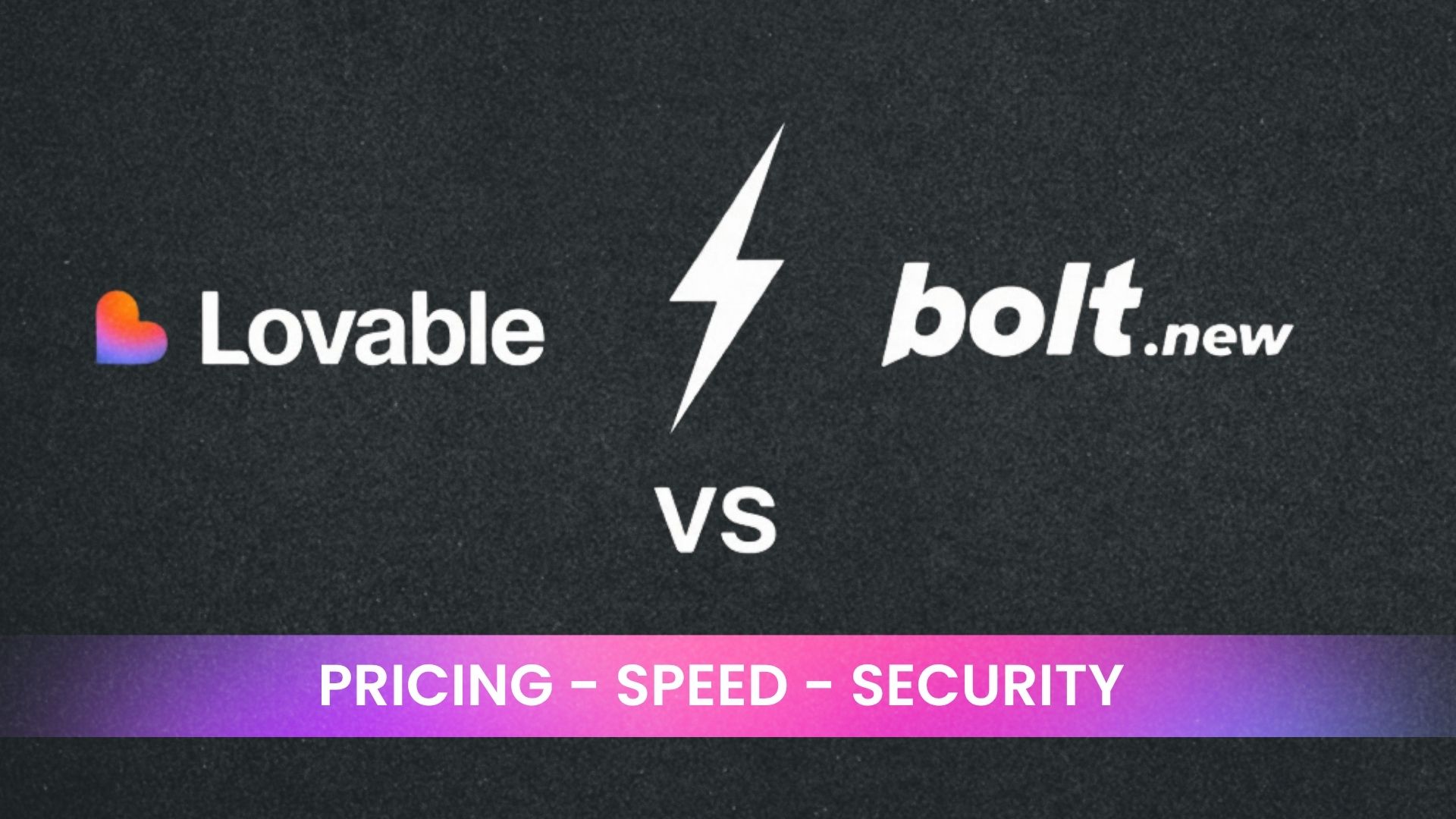Introduction: Why Explore Bubble Alternatives for No-Code Development?

Understanding the Limitations of Bubble
While Bubble boasts a robust visual programming environment, several limitations warrant exploring alternative no-code platforms. In our experience, the steep learning curve, especially for complex applications, can be a significant hurdle. Mastering Bubble’s workflow requires substantial time investment, potentially exceeding the development time saved compared to traditional coding, particularly for less experienced users. Furthermore, scaling applications built on Bubble can become costly, with pricing models often linked to the application’s performance and usage.
A common mistake we see is underestimating the limitations of Bubble’s built-in functionalities. While its plugin ecosystem expands its capabilities, finding and integrating reliable, well-maintained plugins can prove challenging. For instance, specialized integrations with certain APIs or legacy systems might necessitate custom coding, negating some of the advantages of no-code development. This often leads developers to grapple with workarounds or compromises, ultimately affecting the app’s overall performance and user experience. Consider carefully evaluating your project’s specific needs against Bubble’s limitations before committing to it.
Launch Your App Today
Ready to launch? Skip the tech stress. Describe, Build, Launch in three simple steps.
BuildThe Growing No-Code Landscape: Diverse Options for App Development
The no-code development landscape has exploded in recent years, offering a diverse range of platforms catering to various skill levels and project complexities. While Bubble has gained significant traction, its limitations in scalability and pricing for complex applications have spurred the exploration of alternatives. We’ve found that businesses often gravitate towards specific platforms based on their existing tech stack and project requirements. For instance, a company heavily invested in the Microsoft ecosystem might find Power Apps a more seamless integration, whereas those prioritizing rapid prototyping might favor tools like Webflow for front-end development.
This diversification presents both opportunities and challenges. The abundance of choice can be overwhelming, requiring careful evaluation of each platform’s strengths and weaknesses. A common mistake we see is focusing solely on the initial ease of use, overlooking crucial factors like long-term scalability, API integrations, and community support. Consider, for example, the difference between using a platform specializing in database management for a complex data-driven application versus a more general-purpose no-code builder. Understanding these nuances is critical for choosing the right tool and avoiding costly rework down the line. Selecting the appropriate no-code platform ultimately depends on a detailed analysis of specific project needs.
Defining Your Needs: Choosing the Right No-Code Platform
Before diving into specific Bubble alternatives, it’s crucial to define your application’s requirements. A common mistake we see is jumping straight into a platform without a clear understanding of the project’s scope and complexity. In our experience, this often leads to wasted time and resources, as a platform perfectly suited for a simple CRM might be wholly inadequate for a complex e-commerce solution. Consider factors like the anticipated number of users, the required data storage capacity, the need for integrations with other services (e.g., payment gateways, marketing tools), and the level of customization you need. For example, a small business needing a basic inventory management system might find a lightweight platform sufficient, while a rapidly scaling startup launching a marketplace will need a far more robust and scalable solution.
Think critically about the level of coding required. While “no-code” promises ease of use, some platforms offer more flexibility than others. Some require basic coding knowledge for advanced features, while others are truly code-free. You should also assess the platform’s ease of learning and its available documentation and support. A platform with intuitive drag-and-drop interfaces and extensive online resources will greatly reduce your development time. Conversely, a platform lacking robust support could lead to frustrating delays. Carefully weigh these factors to ensure the selected platform aligns perfectly with your project’s needs and your team’s skillset, preventing future headaches and ensuring a successful application launch.
Adalo: The Top Contender for Intuitive UI and User-Friendly Design

Adalo’s Strengths: Ease of Use, Beautiful Templates, and Strong Community
Adalo’s intuitive drag-and-drop interface significantly lowers the barrier to entry for no-code development. In our experience, even users with minimal coding experience can quickly grasp the fundamentals and begin building functional applications. This ease of use stems from a well-designed interface and comprehensive, readily accessible documentation. A common mistake we see is underutilizing Adalo’s built-in components; mastering these accelerates development significantly.
Furthermore, Adalo boasts a library of aesthetically pleasing and professionally designed templates. These pre-built templates, categorized by application type (e.g., e-commerce, portfolio, event management), provide a solid foundation, saving considerable time and effort compared to starting from scratch. For example, we recently used a template for a client’s online store, customizing it within hours to reflect their branding. Beyond the templates, Adalo’s active and supportive community provides invaluable assistance through forums and online resources, readily offering solutions to common problems and fostering collaborative learning. This vibrant community is a critical strength, providing a safety net for users tackling more advanced features.
In-depth Look at Adalo’s Features: Pros & Cons for Different User Needs
Adalo shines in its ease of use, particularly for building visually appealing applications. Its drag-and-drop interface and pre-built components significantly reduce development time. In our experience, even users with limited coding knowledge can create functional prototypes within hours. However, this simplicity comes with limitations. For instance, complex logic or highly customized functionalities may require workarounds or might not be easily achievable within Adalo’s constraints. A common mistake we see is over-relying on default components, leading to applications that lack a unique brand identity. Careful planning and consideration of potential limitations are crucial for success.
For small businesses needing a quickly deployable MVP (Minimum Viable Product), Adalo excels. Its intuitive design and rapid prototyping capabilities allow for faster iteration and user feedback gathering. Conversely, large-scale enterprise applications with intricate data management needs might find Adalo’s capabilities insufficient. For example, integrating with legacy systems or managing a large volume of data could prove challenging. Choosing Adalo should be driven by a clear understanding of project scope. If your app requires extensive customization or complex workflows, exploring alternatives with more robust backend functionalities would be advisable. Consider Adalo a strong choice for initial prototyping and MVP creation, but potentially less suited for mature, high-traffic apps demanding exceptional performance and scalability.
Adalo Pricing and Scalability: Is It Right for Your Project?
Adalo’s pricing structure is tiered, offering a free plan suitable for prototyping and learning, but limiting features and deployments. Paid plans start at around $50/month and scale up depending on the number of users and features required. In our experience, accurately estimating Adalo costs requires careful planning of your app’s complexity and anticipated user base. A common mistake we see is underestimating the cost of scaling, particularly if your app gains unexpected traction. Consider future growth when selecting a plan; upgrading later can be disruptive and costly.
Scalability is a key consideration. While Adalo handles a reasonable number of users on its paid plans, extremely high-traffic applications may require significant investment and potentially necessitate exploring alternative platforms better suited for massive scalability. For example, a client launching a large-scale e-commerce platform using Adalo faced performance bottlenecks exceeding the limits of their highest-tier subscription, necessitating a migration to a more robust solution. Therefore, before committing to Adalo for a large project, rigorously evaluate projected user growth and carefully compare its limitations against your app’s expected scale. Consider conducting load tests to gauge performance under anticipated user loads.
Softr: Building Web Apps Directly from Airtable Data

Softr’s Unique Approach: Seamless Airtable Integration
Softr’s core strength lies in its deeply integrated connection with Airtable. Unlike other no-code platforms that require extensive data import/export processes, Softr directly leverages Airtable’s functionality. This means building a web application becomes a process of visually arranging and customizing your existing Airtable data, rather than rebuilding it from scratch. In our experience, this drastically reduces development time, particularly for users already invested in Airtable’s spreadsheet-database system.
A common pitfall we see with other no-code tools is the disconnect between the database and the frontend application. This often leads to cumbersome data synchronization issues and requires significant workarounds. Softr, however, eliminates this friction. For example, imagine you have an Airtable base tracking customer orders. With Softr, you can instantly create a fully functional web application displaying those orders, allowing for updates directly within the application, all while maintaining a seamless, real-time connection with your Airtable source. This direct integration empowers rapid prototyping and iterative development, accelerating your time to market considerably. This is significantly different from the typical approach of many competing platforms, highlighting Softr’s unique advantage in the no-code landscape.
Use Cases for Softr: When to Choose This Platform for Efficiency
Softr shines when you need to rapidly transform existing Airtable data into functional web applications. In our experience, this is particularly effective for projects requiring a quick turnaround and minimal custom coding. For instance, a real estate agency might leverage Softr to build a client portal directly from their Airtable database of property listings, allowing clients to browse, filter, and even schedule viewings—all without writing a single line of code. This eliminates the need for separate data entry and drastically reduces development time.
Consider Softr if your application primarily involves displaying and interacting with data already residing within Airtable. This includes scenarios such as internal team dashboards, simple CRM systems, inventory management tools, and basic e-commerce platforms (with appropriate integrations). However, a common mistake we see is choosing Softr for complex applications requiring extensive custom logic or integrations beyond Airtable’s capabilities. For highly customized, feature-rich applications, a more robust no-code platform might be a better fit. Remember to carefully assess your project scope and data structure before committing to Softr to ensure optimal efficiency.
Evaluation of Softr’s Capabilities, Limitations, and Pricing
Softr’s strength lies in its seamless integration with Airtable. In our experience, this drastically reduces development time for simple to moderately complex web applications needing a database backbone. We’ve successfully built internal tools leveraging Airtable’s existing data, significantly cutting down on data migration headaches. However, complex workflows or custom functionalities often require workarounds or custom code, limiting its true “no-code” promise for advanced projects. A common mistake we see is underestimating the need for Airtable’s Pro plan to unlock features crucial for robust Softr applications.
Pricing is tiered, starting with a free plan suitable only for small-scale experimentation. The paid plans offer increased features and Airtable storage. While competitive with other no-code platforms, the actual cost depends heavily on your Airtable usage and chosen Softr plan, potentially making cost estimation challenging before committing. For example, a team needing advanced Airtable features could find the combined cost significant. Ultimately, Softr’s value proposition hinges on pre-existing Airtable data and the need for a rapid, relatively low-code approach to web app development, rather than being a fully fledged, comprehensive solution for all application needs.
Glide: Rapid Prototyping and App Creation for Beginners and Experts Alike

Glide’s Strengths: Speed, Simplicity, and Google Sheets Integration
Glide’s phenomenal speed stems from its intuitive drag-and-drop interface and pre-built templates. In our experience, building a functional prototype takes significantly less time than with other no-code platforms. We’ve seen users create fully functional Minimum Viable Products (MVPs) within hours, compared to days or even weeks using alternative methods. This rapid prototyping capability is particularly valuable for quickly testing ideas and gathering user feedback.
The simplicity extends beyond the interface. Glide’s seamless integration with Google Sheets is a game-changer. Data management becomes incredibly efficient; simply update your spreadsheet, and the changes instantly reflect in your app. This eliminates the need for complex database management, a common hurdle for novice developers. For example, a small business could easily manage inventory and customer orders directly within Google Sheets, automatically updating their Glide-powered app in real-time. This tight integration is a key differentiator, making Glide exceptionally accessible for both beginners and experienced developers looking for a quick and efficient solution.
Comprehensive Feature Overview: Exploring Glide’s Capabilities
Glide’s strength lies in its intuitive interface and surprisingly robust feature set, making it accessible to both novice and seasoned developers. In our experience, the ease of connecting to Google Sheets or other data sources is a major advantage. This allows for rapid prototyping and iterative development, crucial for quickly testing app functionality and user experience. For example, we built a simple inventory management app in under an hour, leveraging Glide’s pre-built components for list views and data entry forms.
Beyond basic functionality, Glide offers advanced capabilities such as custom actions, allowing integration with external services like payment gateways or email marketing platforms. Users can also customize the app’s look and feel extensively through themes and components, moving beyond simple data displays to create visually appealing and engaging user interfaces. However, a common mistake we see is underestimating the importance of data structure in Glide. Well-organized data in your spreadsheet significantly impacts app performance and functionality. Careful planning of your data model, including consideration of relationships between different data points, is essential for a seamless user experience and a robust, scalable app.
Glide Pricing and Scalability Options
Glide offers a tiered pricing structure, balancing accessibility with scalability. The free plan provides a great entry point, ideal for experimenting and building simple apps with limited functionality and users. However, in our experience, most serious projects quickly outgrow this. The paid plans introduce features crucial for larger applications, such as custom branding and increased user limits. A common mistake we see is underestimating the number of users needed, leading to unexpected upgrade costs. Carefully consider your app’s projected growth when selecting a plan.
Pricing varies based on the number of users and the features required. For example, a small business might find the Pro plan sufficient, while an enterprise-level application necessitates the Enterprise plan with its superior data management and security features. Glide’s pricing is competitive within the no-code landscape, but remember to factor in potential costs associated with third-party integrations or specialized features. Before committing, we strongly recommend utilizing Glide’s detailed pricing page and exploring their free plan to assess your specific needs and avoid unnecessary expenses. Accurate user projection is vital for cost optimization and long-term scalability.
Webflow: A Powerful Tool for Building Custom Websites and Web Applications
Webflow’s Strengths: Design Flexibility, Customizability, and Advanced Features
Webflow’s visual editor empowers users with unparalleled design flexibility. Unlike coding, where pixel-perfect precision often requires extensive effort, Webflow allows for intuitive drag-and-drop functionality, making complex layouts achievable even for beginners. In our experience, this significantly reduces development time, particularly on projects with intricate design requirements. For instance, creating responsive, multi-column layouts that adapt seamlessly across devices is incredibly straightforward.
Furthermore, Webflow’s customizability extends beyond aesthetics. Its robust CMS allows for dynamic content management, enabling features like blog integrations and member-only areas. Advanced features, such as custom code injection via HTML and CSS embeds, provide extensive control for developers seeking to integrate third-party services or implement highly specific functionalities. A common mistake we see is underutilizing these features. Many users limit themselves to the visual editor, overlooking the potential for truly unique and powerful applications achievable through strategic code integration. This allows for finely-tuned optimization, surpassing the capabilities of many simpler no-code platforms.
Webflow’s Suitability: Is It Right for Your No-Code App Project?
Webflow excels at crafting visually stunning and responsive websites. However, its suitability for complex, data-driven no-code applications depends heavily on project scope. In our experience, Webflow shines when building websites with integrated, relatively simple functionalities – think online portfolios, landing pages, or e-commerce stores with straightforward product listings. For instance, a client recently used Webflow successfully to create a visually impressive e-commerce site, but struggled to implement a complex inventory management system. This highlights Webflow’s strengths in front-end design, but exposes limitations in backend database management compared to dedicated no-code platforms.
A common mistake we see is overestimating Webflow’s capabilities for applications requiring substantial data interaction or intricate workflows. While its CMS allows for dynamic content, it lacks the robust features of platforms purpose-built for app development, such as sophisticated database integrations and complex logic handling. Consider the complexity of your app’s functionality: Will it involve user authentication, intricate data processing, or integrations with external APIs? If so, carefully weigh Webflow’s limitations against the potential for increased development time and complexity. For simpler projects with a strong visual design focus, Webflow is a compelling choice. However, for more ambitious applications, exploring alternatives with richer backend capabilities is often more efficient.
Comparing Webflow’s Pricing Tiers: Finding the Best Value
Webflow offers several pricing tiers, each catering to different needs and budgets. The Basic plan is ideal for individuals or small businesses needing a single website with limited features. In our experience, however, many quickly outgrow its limitations, particularly the absence of custom code embedding and restricted CMS capabilities. Upgrading to the CMS plan unlocks significantly more functionality, such as robust content management and e-commerce integrations – crucial for growing businesses. This tier represents excellent value for its price point, particularly when considering the time saved managing content compared to working directly with code.
A common mistake we see is choosing the most expensive plan immediately. Consider your project’s scale and future growth. For example, a freelance designer building portfolios might find the Basic plan sufficient. Conversely, an established e-commerce business requiring extensive content management and advanced features will benefit greatly from the Business plan, even if it represents a higher initial investment. Carefully evaluate your current and projected needs before committing to a specific Webflow pricing tier. Remember to factor in the potential costs of add-ons, such as custom domains and additional team members, when assessing the overall value. A thorough cost-benefit analysis can help avoid unnecessary expenses and ensure you select the plan that best aligns with your budget and long-term goals.
Directus: Open-Source Headless CMS for Building Powerful Backend Systems

Understanding Directus and its Role in No-Code Development
Directus acts as a powerful, open-source headless CMS that significantly enhances no-code development, particularly when paired with front-end builders like Bubble. Unlike traditional CMS solutions, Directus offers a robust API-first approach, providing a flexible backend system easily integrated with various no-code platforms. In our experience, this decoupled architecture allows developers to focus solely on the user interface and user experience (UI/UX), leaving the complex data management and API interactions to Directus. This separation of concerns accelerates development cycles and reduces the learning curve.
A common misconception is that Directus is solely a database management system. While it excels at managing data through its intuitive interface, its true power lies in its extensive API capabilities. This allows for seamless integration with a wide range of no-code tools, enabling developers to build truly sophisticated applications without writing extensive backend code. For example, a client recently utilized Directus to manage product catalogs and customer data for a e-commerce application built entirely within Bubble. This significantly simplified the integration between the front-end and the database layer, resulting in a streamlined and efficient workflow. The ability to manage data structures, permissions, and automations directly within Directus’s interface, further streamlines the development process, ultimately boosting productivity for no-code developers.
Use Cases: When Directus Is Your Best Choice
Directus shines when you need a flexible, extensible backend without the complexities of traditional server-side programming. In our experience, its strength lies in projects requiring rapid prototyping and iterative development. For instance, we recently used Directus to build a custom CMS for a client’s internal knowledge base. The ability to quickly adjust data models and schema without redeploying the entire application proved invaluable. This agile approach significantly reduced development time and cost.
Another compelling use case emerges when dealing with headless architectures. Directus seamlessly integrates with various front-end frameworks like React, Vue, or even custom-built interfaces. This decoupling allows for independent scaling and updates of both front-end and back-end components. We’ve seen this approach significantly improve performance and maintainability, especially in large-scale applications. A common mistake we see is underestimating Directus’s capabilities for complex data relationships; its robust API handles intricate data structures with ease, making it ideal for applications beyond simple content management. Consider Directus when you prioritize open-source solutions, customization, and a headless approach.
Directus Pricing, Community Support, and Scalability
Directus boasts a compelling open-source pricing model, meaning the core software is free to use. However, costs can arise from infrastructure (hosting, cloud services) and potentially from utilizing premium support options offered by the Directus community or third-party providers. In our experience, smaller projects can easily leverage free hosting options, while larger applications requiring high availability and scalability might benefit from managed cloud solutions, incurring predictable monthly fees. Remember to factor in the cost of developer time, a significant consideration regardless of the chosen backend solution.
Community support for Directus is vibrant and active. The extensive documentation, coupled with a thriving forum and GitHub repository, provides a wealth of resources for troubleshooting and knowledge sharing. While official support is primarily community-driven, several companies offer commercial support packages for those seeking more hands-on assistance. A common mistake we see is underestimating the value of a strong community. Directus’s active community significantly reduces the learning curve and facilitates rapid problem-solving. Regarding scalability, Directus excels. Its headless architecture allows for flexible deployment across various infrastructure setups, from modest servers to sophisticated cloud clusters. This adaptability makes it suitable for projects of all sizes, easily handling growing data volumes and user traffic.
Launch Your App Today
Ready to launch? Skip the tech stress. Describe, Build, Launch in three simple steps.
Build




